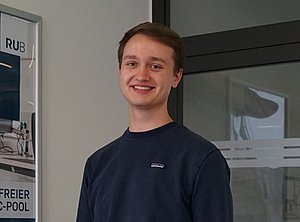As a scientific research institution, RESOLV plays a crucial role in advancing our basic understanding of the world around us and driving technological progress. However, the impact of research in fundamental science institutes often remains confined within academic circles, leaving the broader public unaware of its significance. Promoting the importance of this work is an ongoing challenge faced by RESOLV and many other institutes. To bridge this gap and foster a culture of scientific curiosity, outreach efforts are of paramount importance. These initiatives not only justify the allocation of public funds but also aim to inspire the younger generation, particularly children in their formative years when curiosity is at its peak.
Organizing a successful outreach event is key to conveying the importance of fundamental research to the public, even though many scientists may hesitate when it comes to breaking down their work into audience-tailored talks and workshops. To engage with a broader spectrum of the public, scientists must step out of their comfort zone and promote themselves without delving into specific scientific details. Furthermore, making the work more accessible becomes increasingly challenging when the target audience is younger. However, we must remember that today's children will become tomorrow's scientists, and it is particularly important to capture their attention at an early stage. Scientists work based on their curiosity for the world around us, which is something we all have in common with children. I am delighted to share our experience in acquiring funds, and I will provide four key points to enable a fundamental research institute to fulfil the duty of knowledge transfer to the public and attract the next generation of scientists.
Securing Funding for Outreach Activities
Organizing outreach events requires resources, and securing funding is essential to ensure their success. One way to acquire financial support is through grants offered by scientific associations and organizations dedicated to promoting science education and outreach. In our case, we applied for the "SPIE Outreach Grant" from the Society of Photo-Optical Instrumentation Engineers (SPIE), which awarded us $992 to fund our outreach activities.
To increase the chances of obtaining funding, it is crucial to thoroughly analyse the target audience and align the proposed event with their needs and interests. By demonstrating a well-structured plan that incorporates engaging activities and a comprehensive outreach strategy, the proposal stands a higher chance of success. Additionally, highlighting the long-term impact of such events on fostering scientific curiosity and inspiring future generations can be persuasive in securing funding from organizations invested in promoting science education.
1. Analysing the Target Audience
A crucial first step in organizing an outreach event is understanding the audience you wish to engage with. As an example for this blog, I will focus on the "Türen auf mit der Maus" event, which targets primary school children. If your aim is to attract children of this age, it is important to simplify complex scientific concepts and present them in an accessible manner. Consider their level of comprehension and design activities that will spark their curiosity and imagination while maintaining a connection to your field of research.
2. Simplifying Complex Research
When communicating scientific research, it is essential to distil complex ideas into easily understandable concepts. As an ultrafast laser science research group, we faced this challenge. Therefore, we opted for a workshop focused on building kaleidoscopes, which allowed us to relate the activity to the science of light. By doing so, we provided children with a tangible experience while introducing them to basic optics principles, such as the sunlight spectrum and refraction, in a playful and engaging way.
3. Creating Lasting Memories
To ensure that the event has a lasting impact on the young audience, it is crucial to provide them with a takeaway that will remind them of the experience. In our case, the self-built kaleidoscope serves as a memento that the children can proudly show to their friends and family. By incorporating a hands-on activity and enabling children to construct something on their own, we foster their sense of accomplishment and reinforce their engagement with science.
4. Facilitating Discussion and Exchange
While the primary focus of outreach events is often on engaging children, it is equally important to create an environment that encourages discussion and exchange with adults, particularly parents accompanying their kids. This presents an opportunity to communicate the value of scientific research to a wider audience outside academia, fostering understanding and support for future endeavours. In our example, a valuable exchange is achieved when a researcher involved in outreach can spontaneously adapt the depth and takeaway message of the conversation. The focus of the interaction should be flexible, ranging from curiosity-driven basic research to the application and advances for society and the economy.
Benefits of Outreach Activities for Young Scientists
Engaging in outreach activities and applying for outreach grants offers significant benefits to young scientists. These initiatives provide a platform to develop and strengthen important soft skills, such as science communication, event organization, budget planning, and project management. Moreover, they offer opportunities for young researchers to engage with the wider community and build connections outside academia, expanding their professional network and broadening their perspectives.
It may seem like a big challenge, especially for RESOLV, to organize public events that encompass the interdisciplinary nature of our network. However, events tailored for the broader public should not aim to provide in-depth information about the field but rather to ignite interest and foster exchange. By sparking children's curiosity through small experiments and providing a glimpse into a real research lab, we can easily find common ground across all fields in RESOLV. Such events can generate awareness, attract potential future researchers, and strengthen connections with and within the community. However, they may also require significant resources and effort, and ensuring effective communication across different disciplines, chairs and institutes can be challenging. Nonetheless, RESOLV is committed to overcoming these challenges and reaping the benefits of public outreach events to advance scientific understanding and inspire the next generation of scientists.
-----------------------------------------------------
About the author





